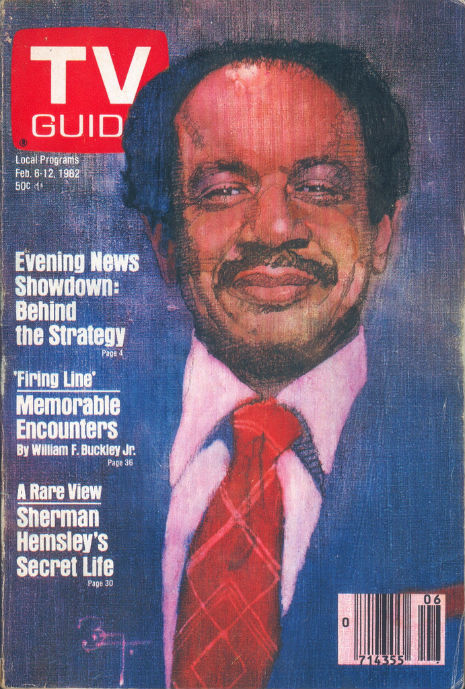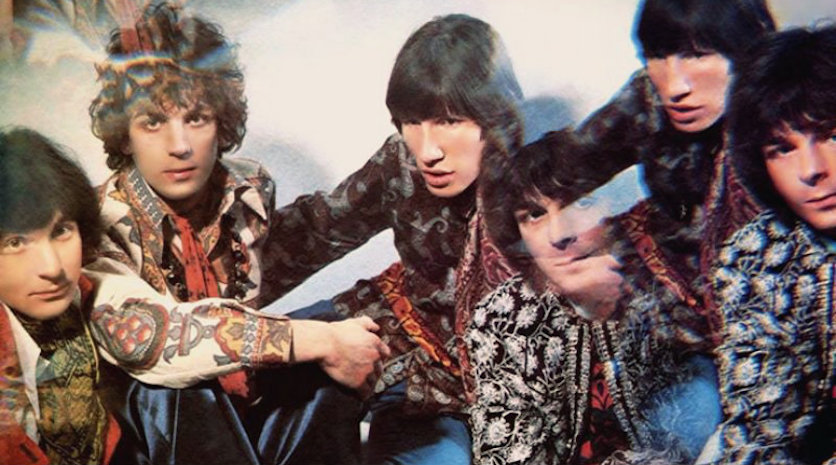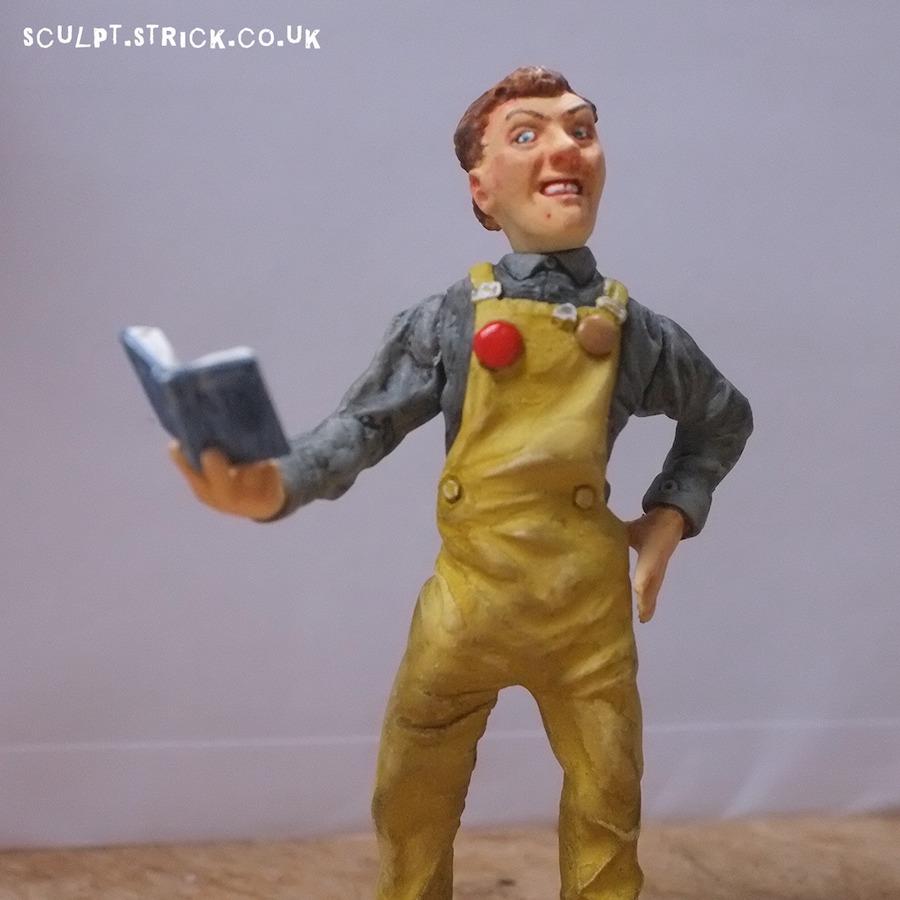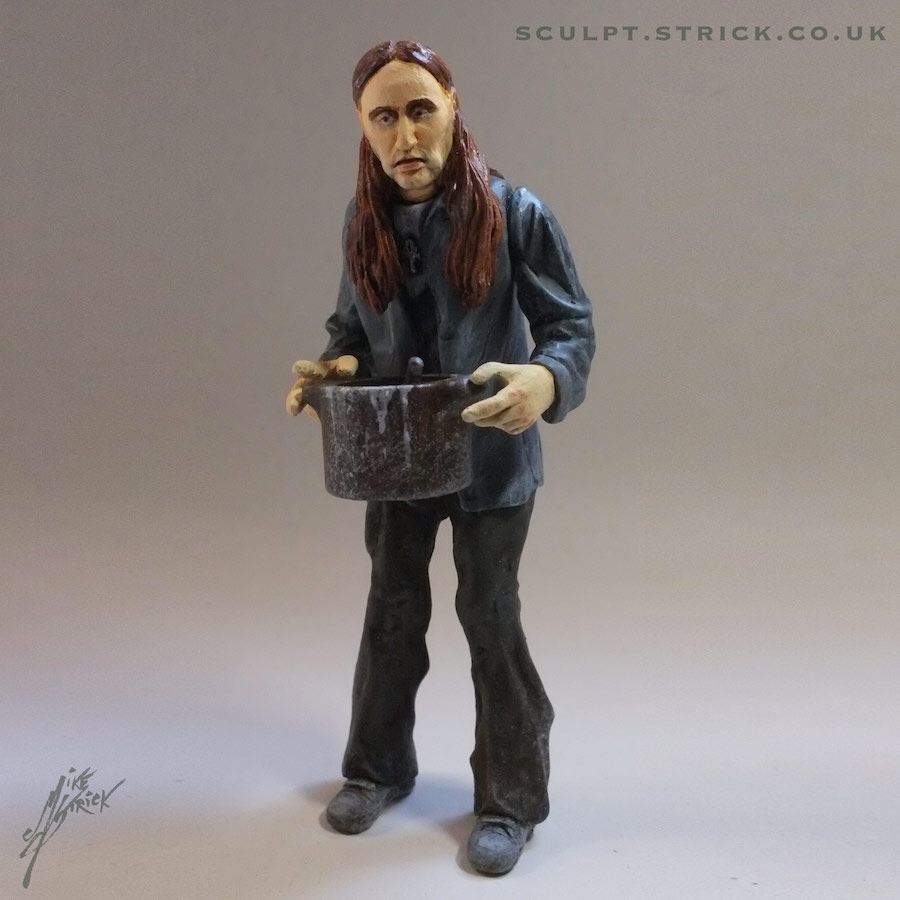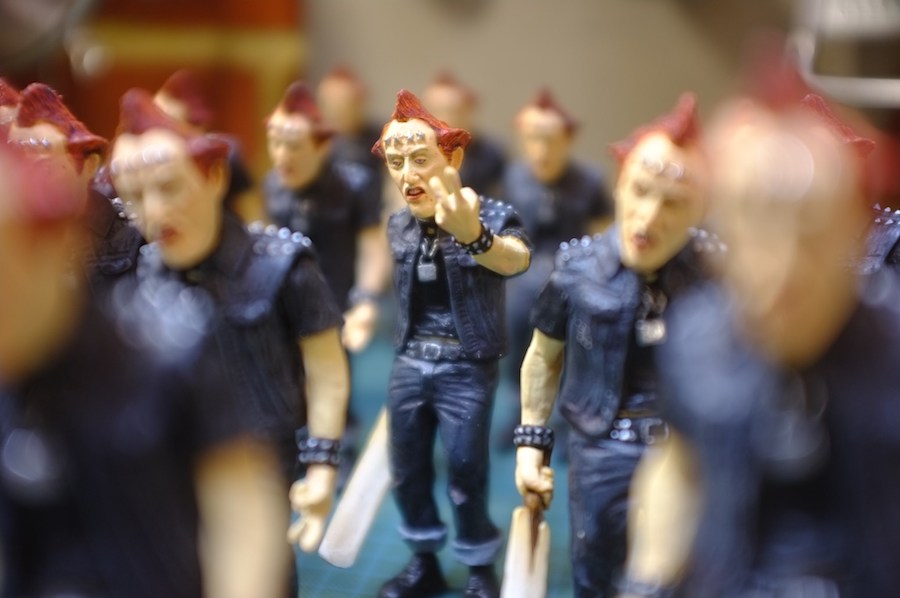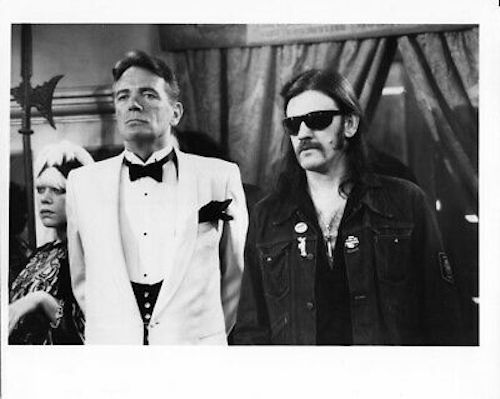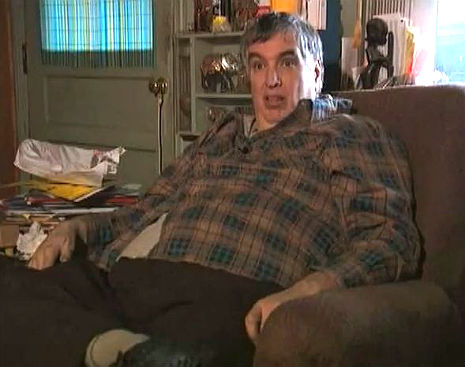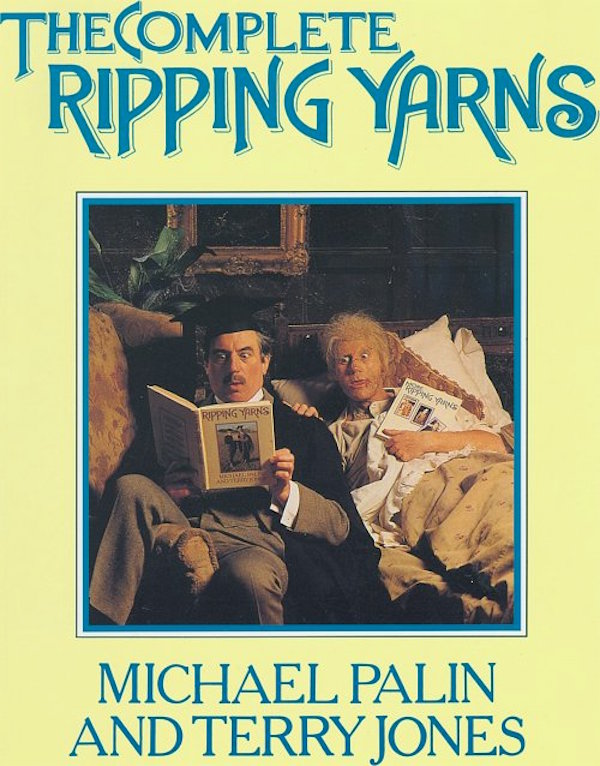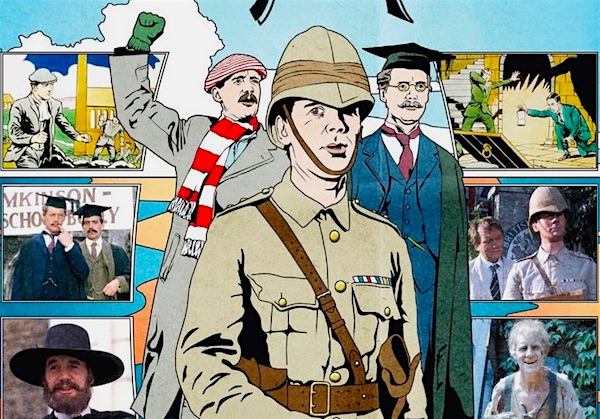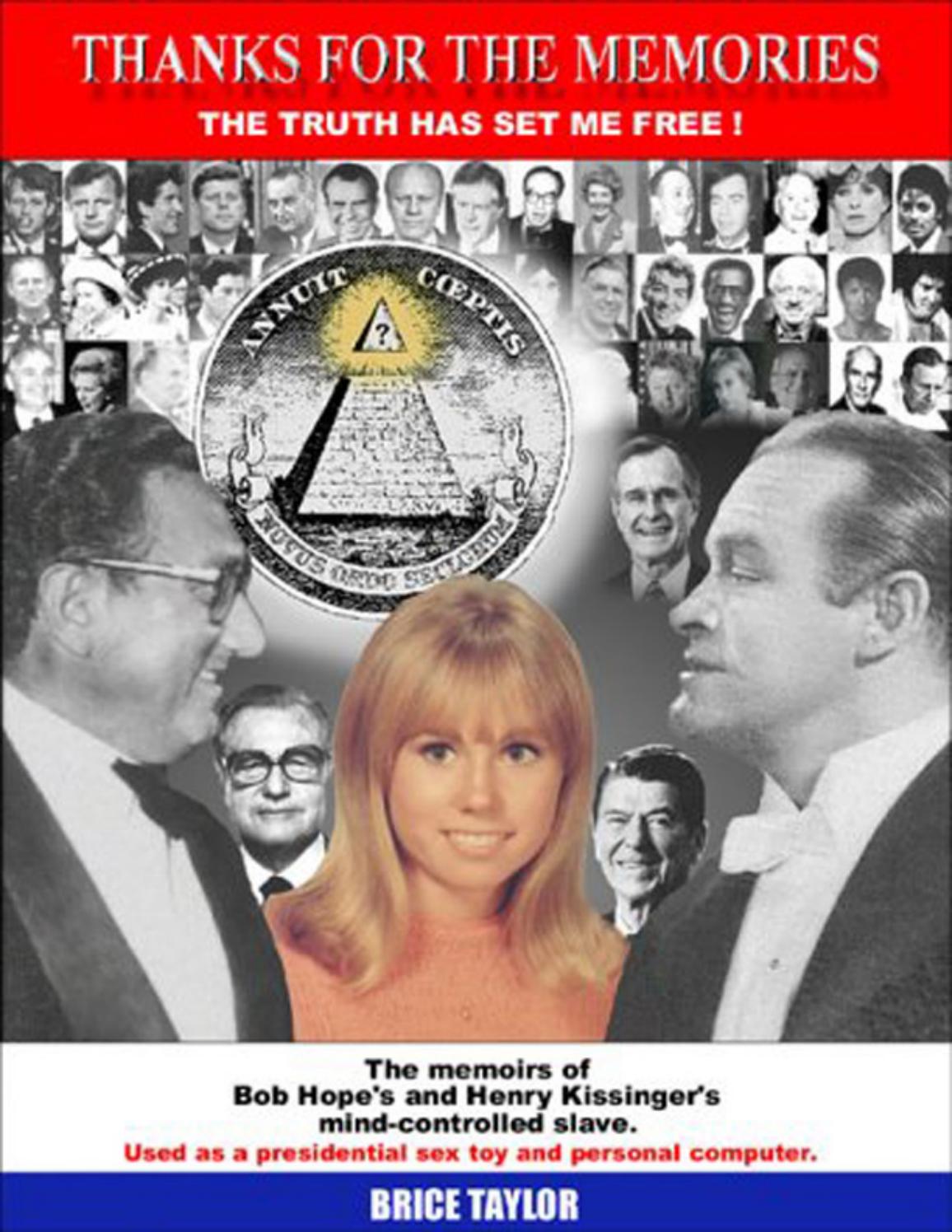
This is a segment from my Disinformation TV series that originally aired late nights on UK television’s Channel Four network in 2000 and 2001. This and many more bits from the series are streaming at Night Flight Plus. Get a full year membership for $29.99 ($10 Off) for a limited time with discount code: DANGEROUSMINDS.
This piece, one of my favorites, focuses on the self-proclaimed “mind-controlled sex slave” of the CIA, “Brice Taylor” (not her real name) but actually did not make it to broadcast. “Brice” is the author of one of the craziest books I have ever encountered, Thanks For The Memories: The Truth Has Set Me Free! The Memoirs of Bob Hope’s and Henry Kissinger’s Mind-Controlled Slave in which she alleges being a victim of the CIA’s MK-ULTRA program, specifically something called “Project Monarch” which groomed “mind-controlled sex slaves” for rich and powerful people.
This was the SOLE piece, the only one out of all the shit I dropped in their lap for two years (“Uncle Goddamn,” Kembra Pfahler sewing her pussy shut, the extreme porn segment, etc., etc., etc.) that the Channel Four lawyers docked from the show. They were amazingly lenient with me for nearly everything—I cannot believe what I got away with, looking back on it—but this one could not be salvaged because British libel laws are such that you can’t knowingly publish a false claim or untruth, and the law is pretty cut and dry on this.
But weren’t her claims of making mother/daughter dolphin porn directed by Sylvester Stallone a little too preposterous to be believed? The fact that no one would believe any of it didn’t really matter, as corporate lawyers, they very simply just could not let this story run. None of it. I was so happy with the way that it had turned out that this seemed like a bitter defeat at the time, but it’s been seen elsewhere since.
The backstory behind this is that I contacted Brice Taylor via her website and told her about the British TV show and invited her to be on it. After an initially wary exchange, I suggested that we speak on the phone.
Her concern, she told me bluntly, was that I was going to make her look like a kook. I then proceeded to give her the well-honed standard rap that I gave to every kook I wanted to get on camera: “Brice, if I have video rolling and you are saying kooky things, look, I’m a television producer, so I’m probably going to use that footage, yes, but if when the cameras are on, you’re true to yourself, you’re poised, you stay on message and you’re satisfied when I leave that you didn’t embarrass yourself, no, I’m not going to go out of my way to make you look like a nut. How would that work anyway unless YOU give me the kooky footage in the first place? So just don’t act like a kook when you’re on camera, okay?”
AS IF, but that line of reasoning did seem to win her over a bit, although she still wasn’t convinced. I upped the ante: “Okay, what if we do the piece from YOUR point of view? In fact, aside from me asking you a question or two off-camera or something minor, the entire piece can be in YOUR voice—we can use the introduction to your book as the narration, it’s perfect, we’ll just mic you up and have you read it a couple of times—and you being interviewed on camera. You have my word that I will basically keep myself out of it. You will write the piece, how’s that?”
She was very definitely “in” after that and the very next day, the fearless cameraman and editor I worked with on the show, Nimrod Erez, one of the show’s producers Brian Butler, and I drove to a place in San Diego where she was staying (it was a gorgeous home in the hills that belonged to her therapist, who she also worked for doing some sort of New Age water therapy/memory retrieval thing that I didn’t really understand).
Upon our arrival, we were greeted by 6’4” retired FBI Special Director Ted Gunderson, a name well-known to fans of the most far-out variants of conspiracy theory. Gunderson, now deceased, but then about 75, was known for being an idiotic bigmouth who hounded the producers of shows like Geraldo! and A Current Affair for appearances. We were told that he was there to provide “security” for “the little lady” as he called her and he’d also invited himself to be on camera (something that she seemed to want, too) to bolster her bonafides. I was only too delighted to accommodate a blithering fucking idiot who would have a lower third (accurately) identifying him as a former FBI bureau chief! In the context of a show that didn’t want the audience to be able to tell if it was a put on, or real, this was a gift.

A few asides about Gunderson: One, he lived in Las Vegas (where he hosted a low watt radio conspiracy theory show) and brought along three framed photographs on his long-ass drive to San Diego. One was him with Gerald and Betty Ford. Another was of him with Ronald Reagan. The third was a portrait of John Wayne, just a regular studio promo shot, not even signed to him or anything. Listen to him speak in the piece. He thought he sounded like John Wayne and he wanted me to somehow connect him to the actor in my mind. Maybe I’d even compare him to John Wayne, he told me.
The second thing was that it was OBVIOUS—and I mean OBVIOUS—that Ted thought he was going to get laid. He followed “Brice” around like a male dog sniffing around a female dog’s ass. When I wanted them both on camera at the same time, she balked and took me aside to admonish me not to “make it look like we’re a couple.” She wasn’t into him, not in the least, but she wanted him there on camera to make her seem more credible.
With a guy like Ted there to buck up your credibility, you obviously ain’t got much to begin with! The best way to describe Gunderson is that he was like Jethro pretending to be a “double-naught spy” on The Beverly Hillbillies. At one point during his law enforcement career he oversaw 700 plus officers of the FBI’s Southern California bureau, and yet frankly, he’s one of the stupidest people I’ve ever met. Whenever someone asks me how he got into such a position, I tell them, “He’s big and he’s pushy.” (I’d run into him a few more times over the years, including when we interviewed him about Satanic cults for another spot on the show. He was a comic foil for me twice in the series.)
As the lights were getting set up, an anxious Brice asked me where the show would be seen and I told her what Channel Four was and I said “It’s network, not cable. One of the main channels over there” and explained that there were fewer television stations in the UK than in America and this caused her to perk up. “So you mean to tell me, like they’ve only got four or five TV channels? And that’s what everyone basically watches? Do you think the Queen of England watches Channel Four?”
I was confused about where she was going with this and I demurred “Well, yeah, I’m pretty sure, of course, that she’s watched Channel Four, yes…”
“OH MY GOD! OH MY GOD! TED! TED! He says the Queen of England might see this show! Maybe I can get a message to her about my son!”
She turned to me, obviously cycling maniacally at this point: “So you really think the Queen of England will see this???”
Not wanting to dampen her instantaneous enthusiasm for the task we were about to embark on, I replied that if the Queen of England was up watching late night TV and flipping channels while the Duke of Edinburgh snoozed, then, yes, perhaps there was perhaps a certain mathematical possibility of that occurring… (!)
I don’t want to give too much away for anyone who hasn’t seen it, but we discussed beforehand that when I would feed her the question about the Queen, she would shift from speaking to me, to addressing the camera/Queen directly for some added dramatic oomph!
With the interview, the B-roll and the voice-over in the can, we decamped to Kinko’s to get color photocopies of her family photographs. Gunderson came with us, at one point comically showing off that he was packing heat to try to impress her, but by then it was obvious that she’d gotten what she wanted out of him (the drive from Las Vegas to San Diego is hardly trivial) and she started making “Well, I’ve got to be getting home now” noises to clue him in that he wasn’t getting any of that Project Monarch pussy anytime soon.
While the piece was being edited, I invited my pot delivery guy, a fat queeny dude (think “Cam” on Modern Family) to watch it. When it was over, he looked at me and said “You know you’re going to Hell, right?”
Perhaps he’s right, but at least I kept my word about letting Brice tell her own story, her way. Although the piece did not air on Channel Four as I’d hoped, when “Brice” got a VHS of the segment, she seemed thrilled and sent me a copy of her book inscribed with a thank you.
Over the years, when I’ve been invited to screen the Disinformation TV shows at museums and repertory cinemas, the most ridiculous question anyone has ever asked me about this piece—and it gets asked nearly every time!—is “How much of what she says do you think is true?”
Um…. how’s about none of it?
As a weird footnote to this piece, I’ve seen it passed around by various “believers” and “truth seekers” on Facebook and elsewhere for years, as if it’s an actual news piece, or a true documentary. Just last week it was seen on Twitter as a QAnon something or other. I felt like razzing this person for a moment, but soon thought better of it for obvious reasons!
And now, without much further ado, take it away Brice Taylor, mind-controlled sex slave of the CIA…
Watch more Disinformation on Night Flight Plus, the only place to watch original episodes of the cult 1980s series Night Flight. Get a full year membership for $29.99 ($10 Off) for a limited time with discount code: DANGEROUSMINDS.
